The first thing you notice is the extremely bedazzled, geode and faux fur-covered, petite but fully functional carousel strewn with gem-encrusted, pelted equine furries. It has mirrors and a dismembered dragon and it glimmers and glints in both a gorgeous and horrifying, superlatively over-the-top Vegas rococo kind of way. This work by Raúl de Nieves (who set a similar tone of ecstatic excess with his twist on stained glass windows at the 2017 Whitney Biennial) both beckons and startles. Best to give it a minute, back up and take in the paintings in the first gallery before proceeding.
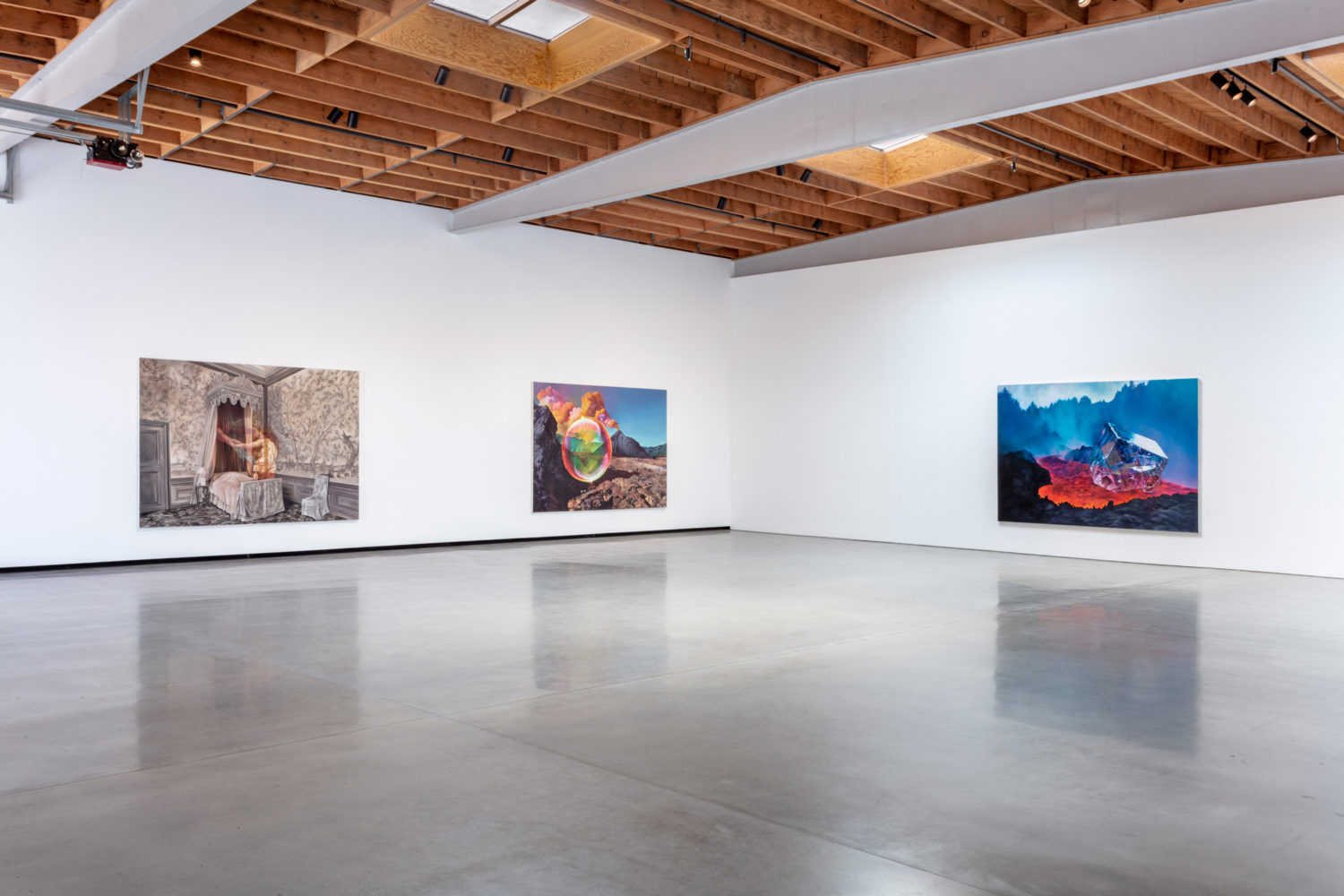
The Emerald Tablet, paintings by Ariana Papademetropoulos, installation view at Jeffrey Deitch (Photo by Joshua White/jwpictures.com)
The first room in this bespoke configuration of Jeffrey Deitch Gallery offers a solo show of astonishing new paintings by Ariana Papademetropoulos — the artist who then went on to curate the group exhibition that unfolds on the other side of the merry-go-round. Papademetropoulos is known for applying a perfectionist’s realist rendering technique with an opium-dusted fantasist’s penchant for dreamland scenarios.
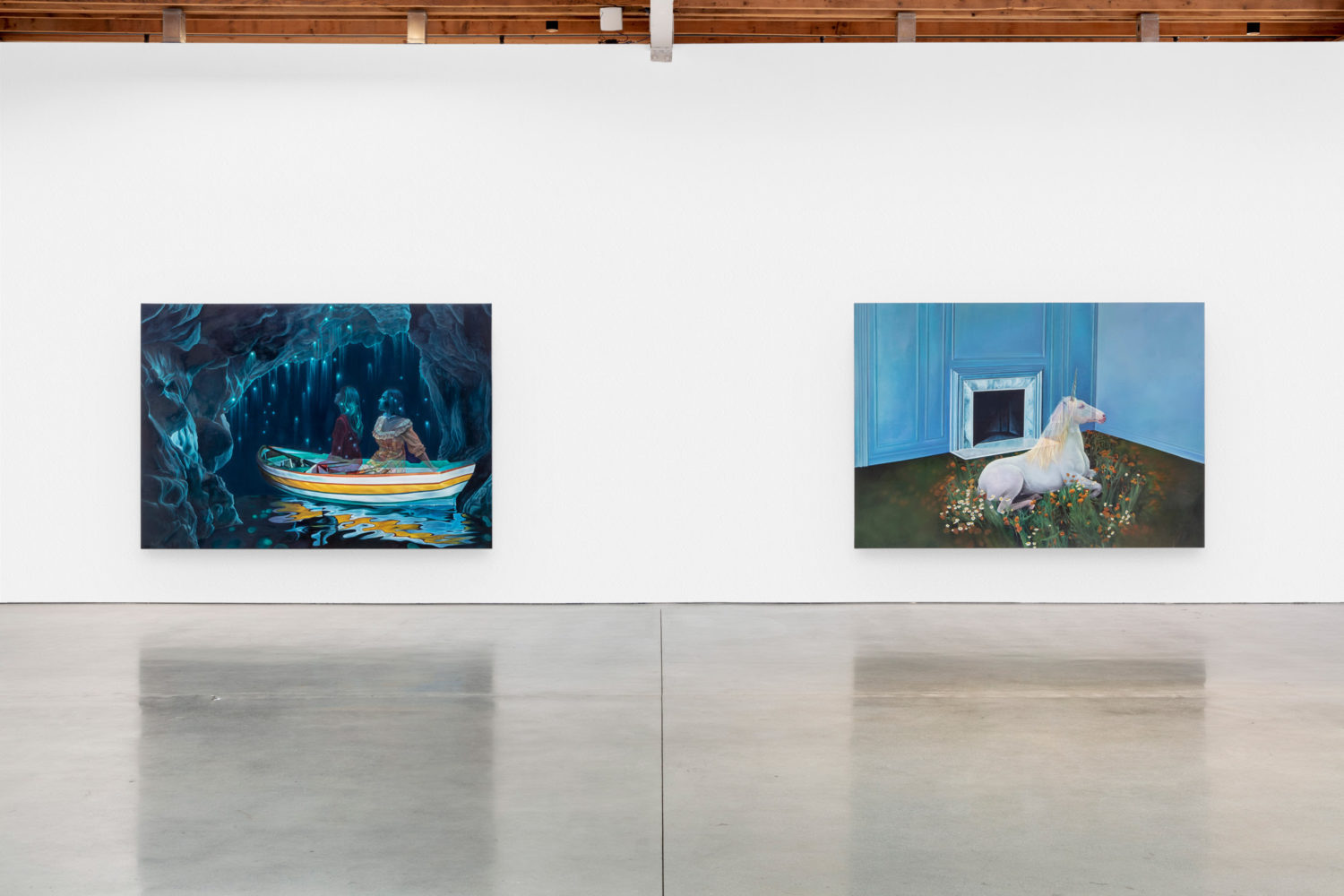
The Emerald Tablet, paintings by Ariana Papademetropoulos, installation view at Jeffrey Deitch (Photo by Joshua White/jwpictures.com)
Her paintings radiate the language and logic of mystics and their allegories, poets and their riddles. Sisters explore and linger at the mouths of dark watery caverns by boat, guided by underground starlight. A unicorn takes up residence by the living room fireplace, and brings all their own flowers. There are lava flows and ghost nymphs and rainbow bubbles just like the one Glinda the Good Witch got around in.

Raúl de Nieves: When I look into your eyes I see the Sun, 2018. Beads, fur, acetate, lights, vinyl, paint, brass, plexiglass on working carousel (Photo by Joshua White/jwpictures.com)
Back out into the rest of the show, that gaudy carousel suddenly makes a lot of sense as your consciousness has already been adjusted like eyes in the light. The procession of The Emerald Tablet features tens of artists including Papademetropoulos herself whose works take direct inspiration from eccentric spiritualist traditions — in some cases from Hollywood itself as an epicenter of transformation, a kind of portal to any and all dimensions, and the locus for an alchemical aesthetic that continues to inform contemporary occultists and illusionists of all genres.
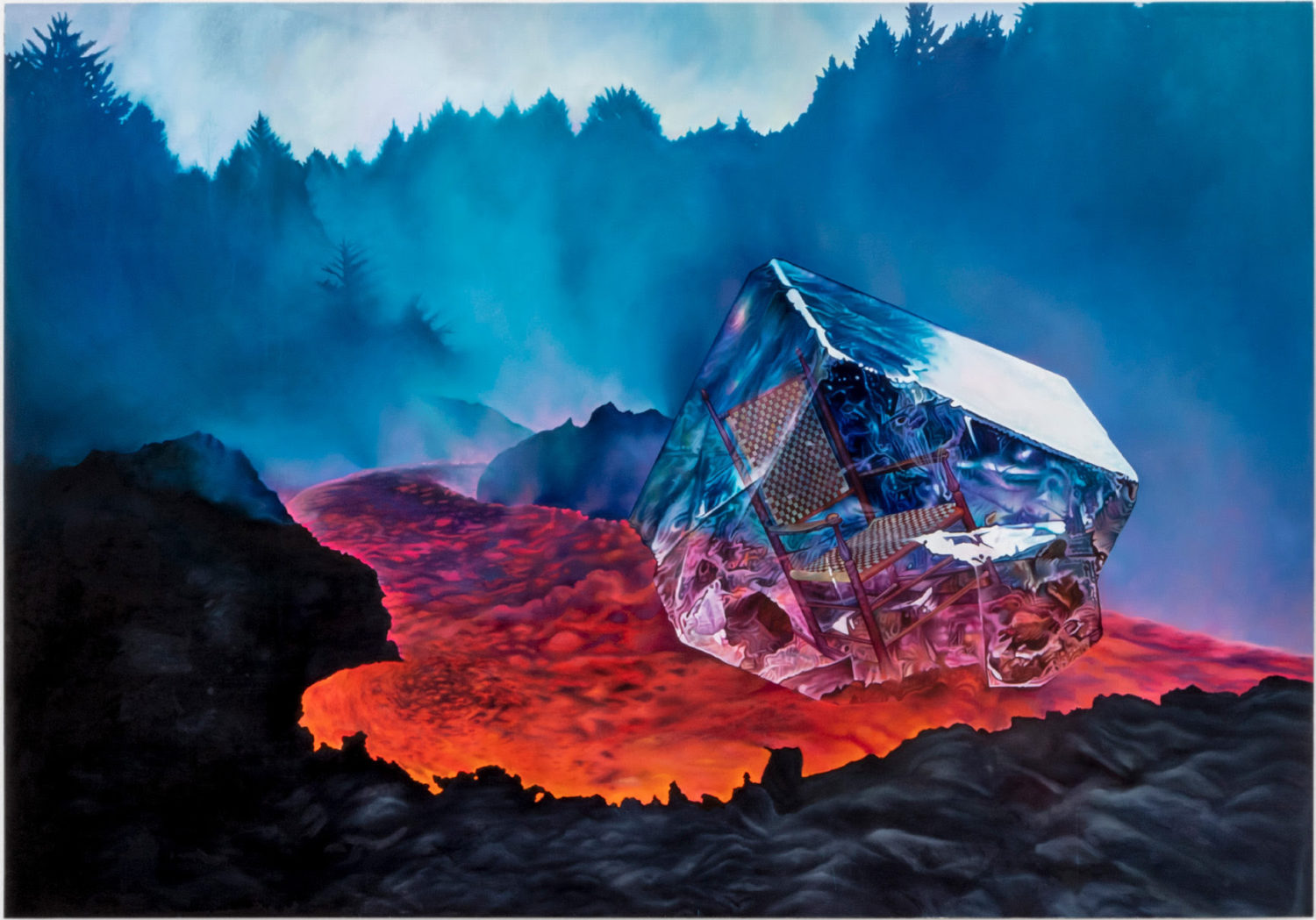
Ariana Papademetropoulos: A Mellow Drama (2021), oil on canvas, 84 x 120 in (Courtesy of Jeffrey Deitch)
The idea of L.A. as a place where artists — not to mention just millions of random people — have pursued alternative paths to awaken and evolve the body, mind and spirit is not new. One very high-profile, and yet in some regards almost unknown, example of this is referenced in the show’s title. Apparently, the Emerald City in L. Frank Baum’s The Wizard of Oz was a direct citation of a central text in the Theosophist tradition — The Emerald Tablet of Hermes, a doctrine on alchemy. Theosophy itself is deeply associated with its Los Angeles roots and continued cultural influence, and Baum was a devout adherent. Needless to say, this frames the Oz universe’s symbolism of spirit guides, witches, fire, water, poppy fields, hearts, minds and hidden truths in the newest light since they synced it up with Dark Side of the Moon.
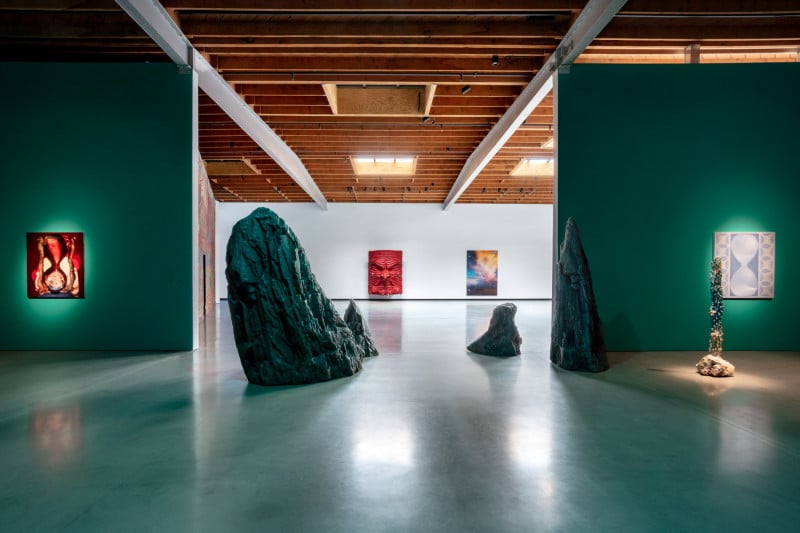
The Emerald Tablet, installation view at Jeffrey Deitch (Photo by Joshua White/jwpictures.com)
The exhibition then proceeds through a series of chambers. The first — the one with the carousel — is dedicated to overtly performative, spectacular, arresting popular culture at the edges of Hollywood magic and practical magick. A fur-covered, headless nude fawn goddess by Isabelle Albuquerque; a luminous abstract verdant vortex by painter Lucy Bull; a pair of unsettling nude girls in spirit boot camp classics by Henry Darger; a terrifying new old god monument by Jordan Wolfson; and an undeniably enchanted figure/golem made of wrapped dirt, yarn, wool, blood and prayer by sculptor Precious Okoyomon.
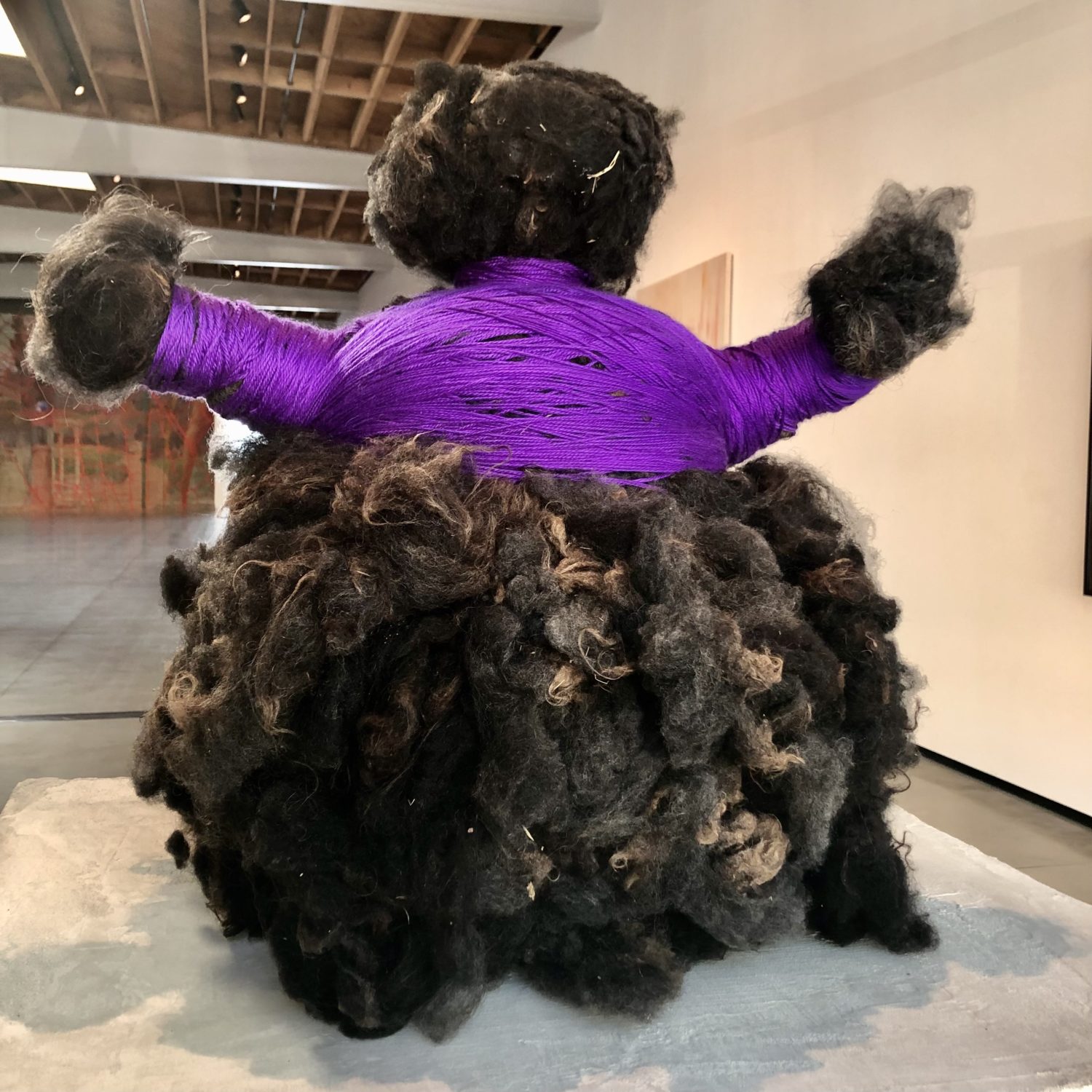
Precious Okoyomon: Psalm of my wilderness, 2021. Raw wool, Yarn, Dirt, Blood. Approx 25 x 25 x 25 in (Photo by Shana Nys Dambrot)
At the far end of this cavalcade is a stand-alone installation by Jim Shaw, a tarpaulin theatrical backdrop re-used as a frontage to a hidden interior. Walk through and be rewarded with the unexpectedly creepy spectacle of giant garden gnomes praying to sacred quartz crystal obelisks. This announces the third and final room, its liminal threshold demarcated by dark lighting, deeper muralized color field walls, craggy outcropping-like sculptures that sometimes double as display units all suggesting a slightly extraterrestrial landscape.
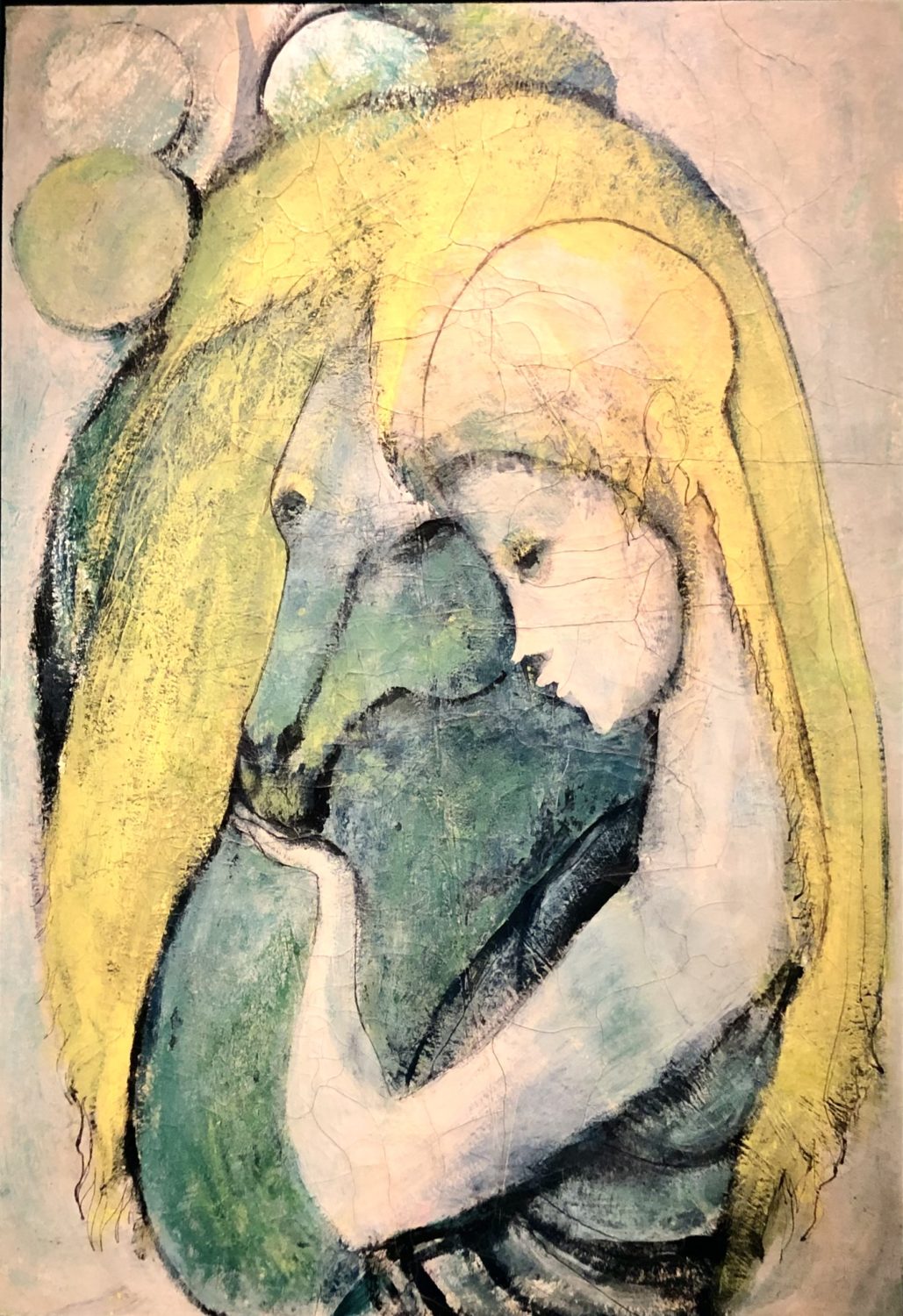
Marjorie Cameron: Sea Horse, ca. 1950-52. Oil on fiberboard, 49 x 34 in (Photo by Shana Nys Dambrot)
This room, complete with its design and ambient soundtrack by Beck, is described as a “reimagination of The Emerald City as a spiritualist landscape,” and the assembled works move back through some ancestral generations of L.A. and regional artists to highlight the true depth of these spiritualist roots in rarely exhibition paintings by the witchiest of all L.A. witches, the scarlet woman, the fulcrum of the Jack Parsons/L. Ron Hubbard murder and immortality love triangle, Marjorie Cameron. Like folkloric surrealist Leonora Carrington, whose work is represented here with paintings on Noah’s Ark (1962) and an artist’s special spirit animals (1949), Cameron openly courted the presence of transcendent beings in her life and work.
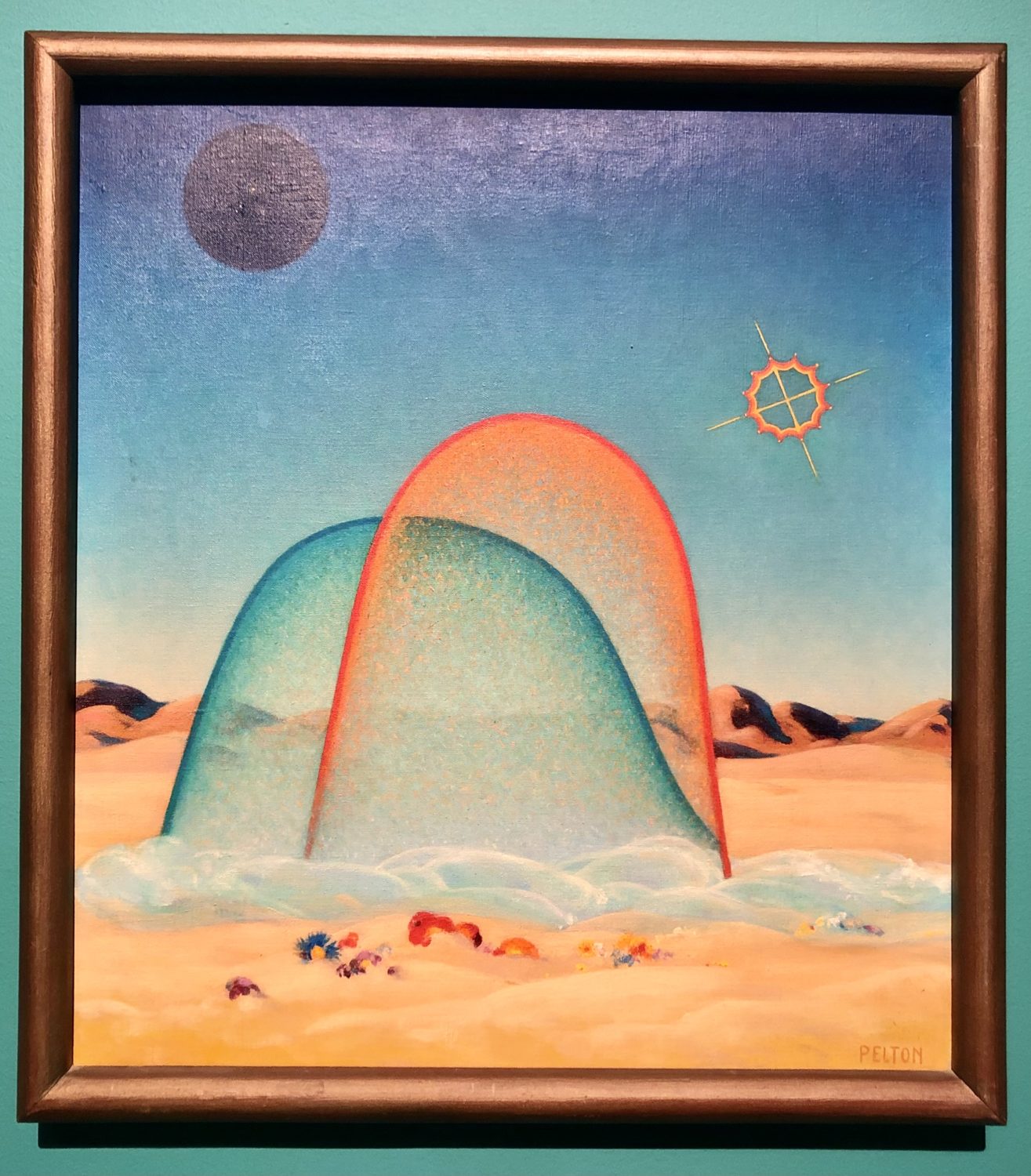
Agnes Pelton: Face to Face, 1953. Oil on canvas 22.5 x 20.5 in (Photo by Shana Nys Dambrot)
Agnes Pelton, who was recently the subject of a landmark Palm Springs Art Museum survey on her visionary work from the first half of the 20th century, is represented by a pair of works locating living energy field abstractions within observable landscapes, and in their insistence on the very real presence of a sensate rainbow within our grasp, most urgently recall the original works of Papademetropoulos that form the cornerstone and lead toward the future of this particular wild temple.
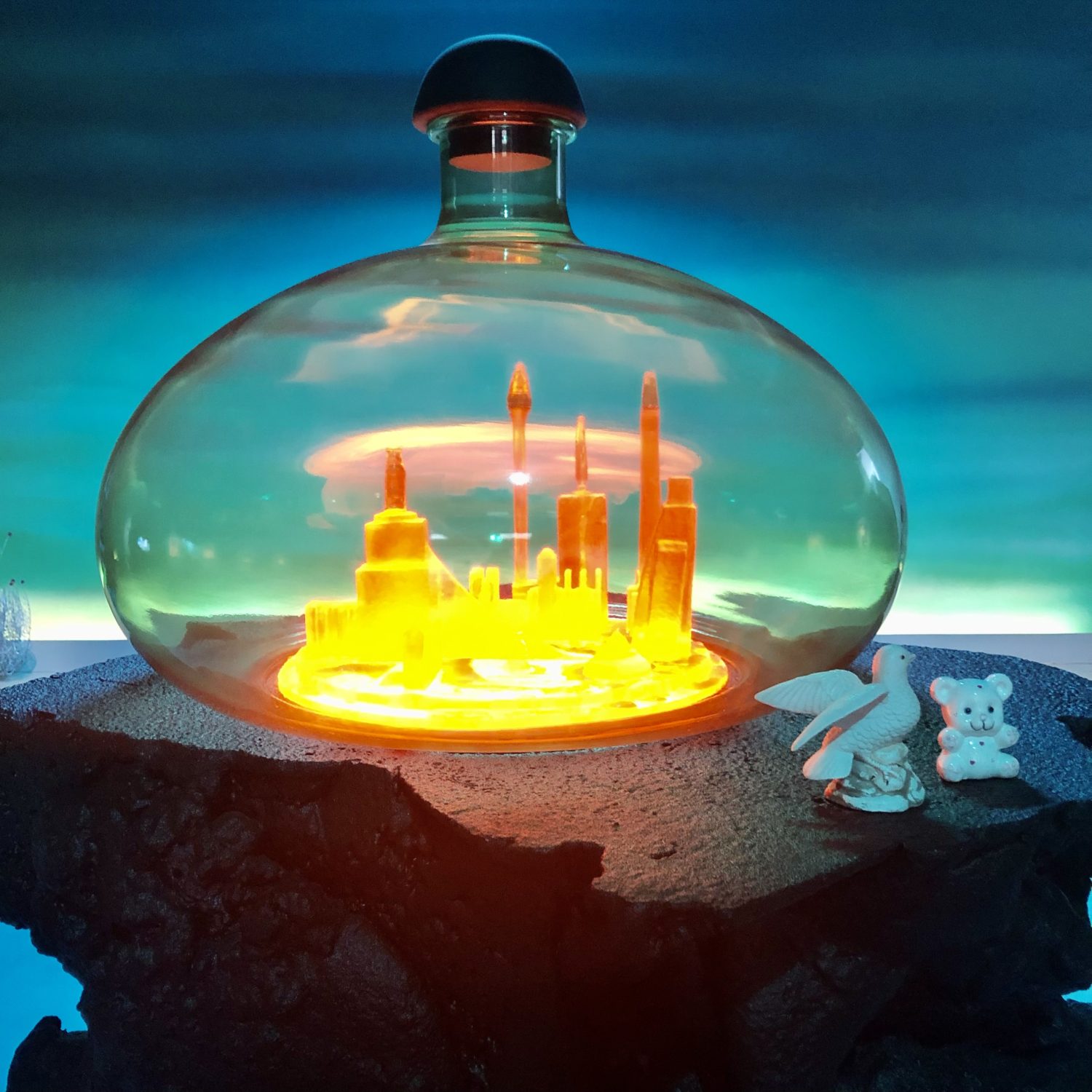
Mike Kelley: Kandor 18B, 2010 (detail). (Photo by Shana Nys Dambrot)
Perched atop the large rocks is the beloved dildo-based city-in-a-glass-bubble sculptural Kandor work by Mike Kelley, and one of them contains a 100-minute video masterpiece by Unarius. Do you know about Unarius, aka Stephan Yancoskie, under the channel ship of Archangel Uriel? Okay, so, in the 1950’s Ernest and Ruth Norman founded the Unarius Academy of Science on the premise that man is inherently psychic. The core tenet is that as lordly light beings it is each individual’s responsibility to be a benevolent presence in this life and beyond. In 1975, Unarius opened a school of karma and energy work and in the 1980s a widowed Ruth (think Glinda plus Tammy Faye) went on to produce and star in a trove of genius-level films — now cult classics — complete with auric, sparkling costumes, makeup, sets, location work and truly inspired DIY special effects that in their own way fulfill the ultimate manifestation of Hollywood as an enchanted place where absolutely anything is possible.
On view through October 23 at Jeffrey Deitch Gallery; 925 N. Orange Dr., Hollywood; free; deitch.com.
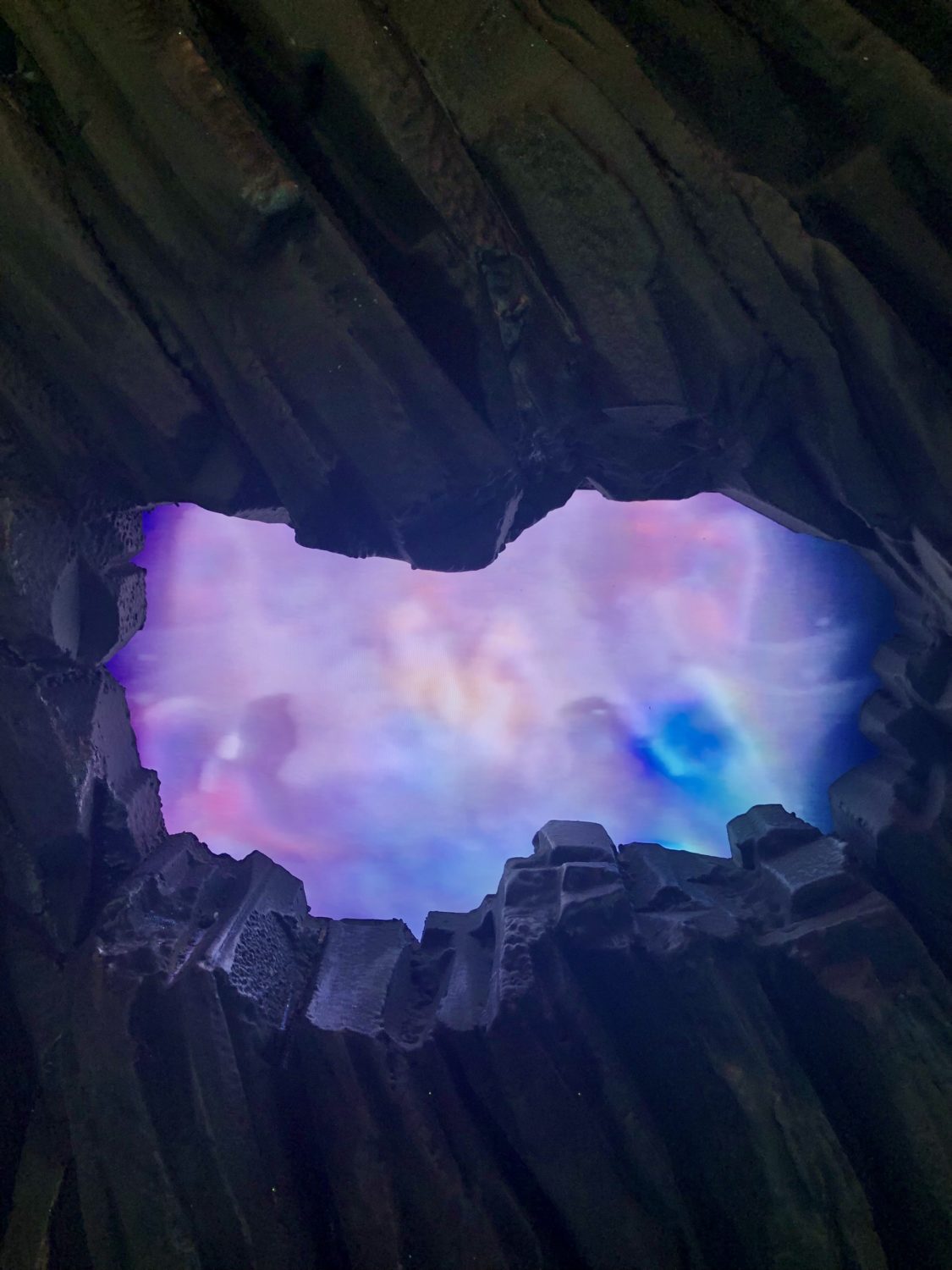
Unarius: CRYSTAL MOUNTAIN CITIES, 1982. 3:4” video, 102 minutess. Directed by Stephan Yancoskie under the channel ship of Archangel Uriel (still/detail) (Photo Shana Nys Dambrot)
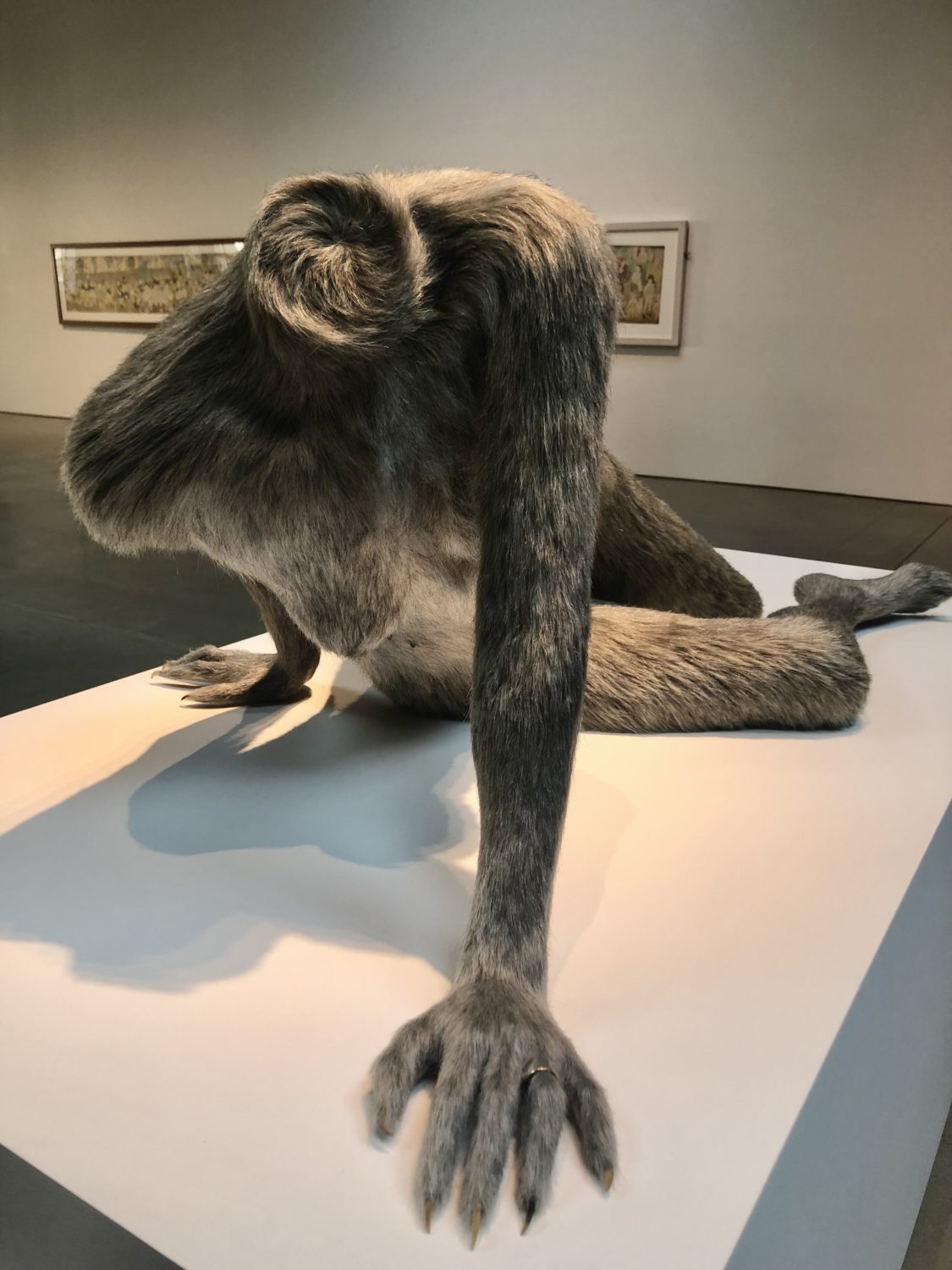
Isabelle Albuquerque: Orgy for 10 People In One Body no. 8, 2021. Mixed media, 20 x 28 x 66 in (Photo by Shana Nys Dambrot)
The post Ariana Papademetropoulos and the Legend of <I>The Emerald Tablet</i> appeared first on LA Weekly.

0 Commentaires